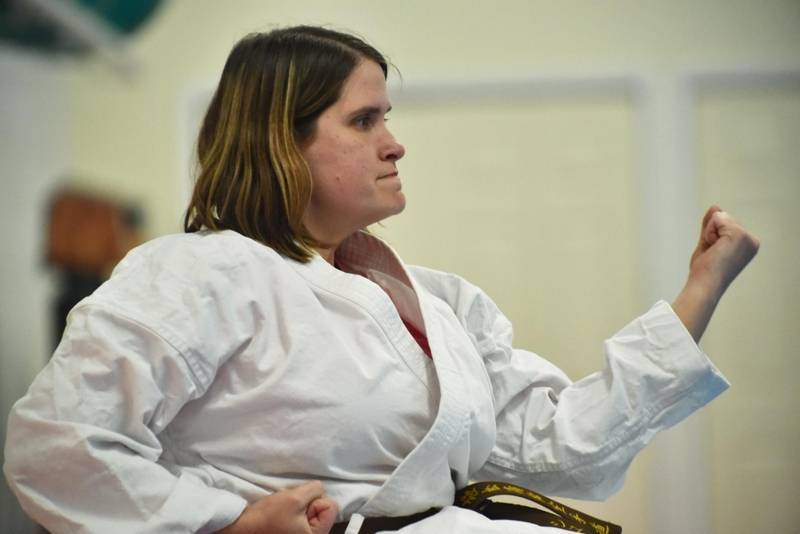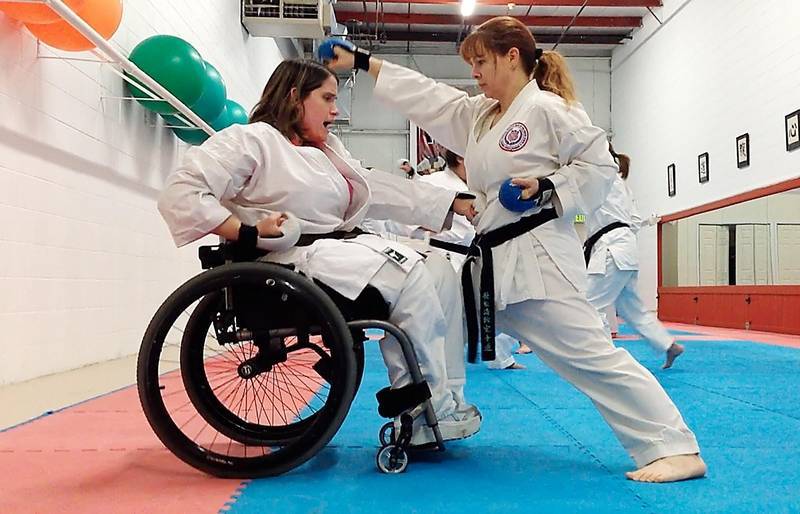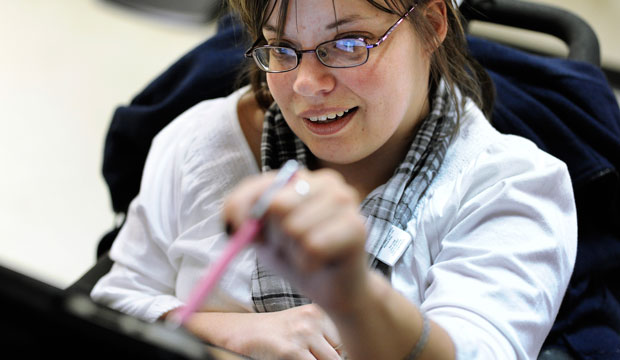Apparel causes additional barriers for people with disability
Study highlights need for affordable, accessible adaptive clothing.
Clothing in the U.S. is a multi-billion dollar industry, but for the millions of Americans [and those of us in Canada] with disabilities and their families, a lack of options in the apparel industry presents daily challenges. Now researchers from the University of Missouri are looking at the relationship between apparel and marginalization for people with disabilities.

Woman with spina bifida is one step closer to achieving her dream of getting a black belt. Able Thrive.
Sheena Rice, University of Missouri June 14, 2016.
Allison Kabel, assistant professor of health sciences in the School of Health Professions, found that the lack of adequate, accessible apparel created barriers for people with disabilities from engaging in their communities. She identified the need for innovation in design, production, distribution and sale of adaptive clothing.
“While it may be an afterthought for some, clothing and appearance are not trivial,” Kabel said. “What we wear matters in how we participate in our communities. Job interviews, court appearances, team sports and formal events are just a few examples of times when standards for appropriate dress exist. For people with disabilities, the lack of adaptive clothing is not just a burden, it is a barrier for community participation.”
Kabel and Kerri McBee-Black, instructor of textile and apparel management in the College of Human Environmental Sciences, analyzed interviews from a focus group on the topic of clothing and how clothing impacted their lives. The key findings from this study identified apparel-related barriers for people with disabilities that fall into three basic categories: mechanical and functional barriers, cultural barriers, and sensory sensitivity barriers.

Kelly Schultz of Crystal Lake, left, will attempt Saturday to gain her black belt in karate. She’ll do it in the division that includes able-bodied athletes. John Starks, Staff Photographer. Daily Herald.
The mechanical aspects of getting dressed were found to be a significant challenge for people with disabilities and their caregivers. Zippers, buttons, shoe laces and fabric texture often present challenges for those who live independently. Others reported problems when trying to find clothes that fit. In one example, a child with Down syndrome had to have her clothes attached with safety pins to prevent them from falling off, due to a mismatch between her body proportions and current clothing industry sizing.
Cultural issues present other obstacles for caregivers for people with disabilities. A female caregiver for a male stroke victim from South Asia struggled to care for him when he lost his ability to put on or take off his own shoes or socks due to nerve damage. This was due to cultural prohibitions around the touching of feet. Focus group participants also identified challenges from trying to dress children of all ages with sensory sensitivities, particularly those with disorders along the autism spectrum.

A Fair Shot for Workers with Disabilities. AP/Jessica Hill
“Participants of the focus group had no shortage of examples to highlight apparel-related barriers in their day-to-day lives,” Kabel said. “In many cases, the only options are custom-made clothing, which is not accessible due to high costs. Affordable clothes that can be mass produced are necessary to address specific apparel-related barriers identified in our research.”
The study, “Apparel-Related Participation Barriers: Ability, Adaptation and Engagement,” recently was published in Disability and Rehabilitation. Jessica Dimka, research fellow in the Department of Epidemiology at the University of Michigan also contributed to the study. Kabel’s future research will be focused on the potential for universally-designed apparel and adaptive clothing.
Source University of Missouri
Via News-Medical.net and Newswise
Apparel-related participation barriers: ability, adaptation and engagement, Kabel A, McBee-Black K, Dimka J. Disabil Rehabil. 2016 Jan 5:1-9. [Epub ahead of print]
Also see
Kids, Teens and Plus Sizes for those in wheelchairs coming 2016 in Alter Ur Ego
Jeans created for wheelchair users in New Mobility
